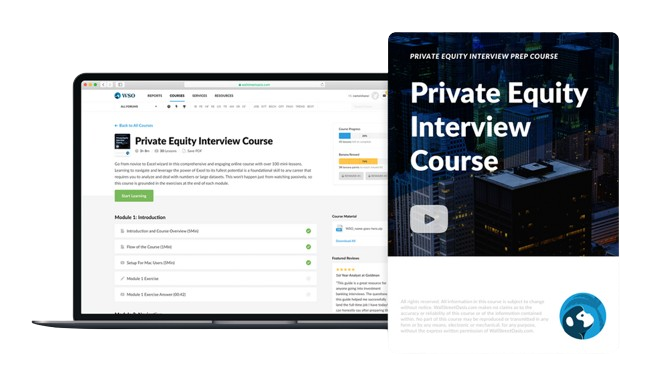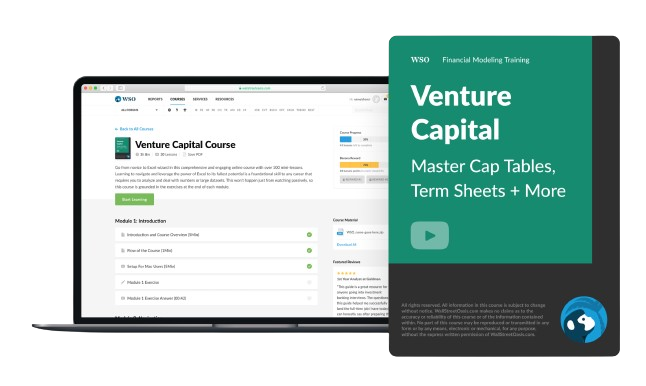Capital Raising Process
A company raises funding from an outside source to realize its strategic goals
Capital Raising Process – An Overview
In this article, we will discuss the capital raising process. We will define the different types of capital, why companies need to raise capital, and the steps for raising it.

Capital raising refers to the process through which a company raises funding from an outside source to realize its strategic goals.
Some examples of a company’s strategic goals may include investing in its business development or other assets. A company may attempt to carry out an M&A transaction, joint venture, or other strategic partnership.
A company can raise capital in three ways:
- Retained earnings
- Debt
- Equity
Retained earnings are a company’s net income after expenses and obligations are accounted for. Using retained earnings is the simplest form of capital raising because it means that the company does not owe anyone anything. A company can use its retained earnings to fund business projects.
Debt capital raising is when a company borrows money to fund its growth and projects.
A company can also raise capital by selling shares to stockholders. This process is called equity funding.
Key Takeaways
- Capital raising allows companies to raise external funding for strategic goals.
- This can be done through retained earnings, debt, or equity.
- Companies raise capital for purposes such as mergers and acquisitions, purchasing fixed assets, raising working capital, and company restructuring.
- The process involves steps like underwriting, book building, and roadshows.
- Pricing an offering is crucial, and alternative sources of capital include private equity, private debt, angel investors, and venture capital.
What are the different Types of capital-raising processes?
There are a few different types of capital raising, including debt financing, equity financing, and a hybrid of the two.

- Debt Raising: This process is also known as debt financing. It occurs when a firm borrows money and promises to pay it back later. Usually, this takes the form of a loan.
- Other times, a company will sell a bond to investors. Once the bond matures, the company will pay investors interest payments on the bond.
- Equity Raising: Also referred to as equity financing, this is the process of raising capital through the sale of shares of a company’s stock. One disadvantage of equity financing is that the firm issuing shares essentially sell off bits of its business ownership to investors to raise capital.
- Hybrid of Debt and Equity: An example of a hybrid of debt and equity is a convertible note. A convertible note starts as short-term debt and is later converted into equity.
- Essentially, investors loan money to a company and are repaid with equity instead of principal and interest.
Why do Companies Raise Capital?
The overarching purpose of raising capital is for a company to grow. We will further discuss the different ways company growth occurs and why capital raising is needed.

1. Mergers and Acquisitions (M&A)
Typically, companies do not have enough cash to finance a merger or acquisition entirely on their own. Thus, they look to equity and debt financing to raise capital for M&A transactions.
2. Purchase of Fixed Assets
Companies looking to expand require regular reinvestment in their property, plant, and equipment (PPE).
3. Raise Working Capital
Working capital is a company’s current assets, less its current liabilities. Net working capital measures a company’s short-term financial strength, liquidity, and operational efficiency.
Early-stage companies often look to raise capital for hiring employees, marketing, and technology to increase their working capital.
4. Company Restructuring
When a company is looking to restructure (i.e., rebrand, shift management, or move locations), it may raise capital to fund these efforts.
Steps involved in the capital Raising Process
In this article, we will primarily discuss the process that banks carry out for raising capital. This is typically the job of investment bankers, who raise capital for the bank’s clients.

Here are the main steps in the capital raising process:
Underwriting Process
In the underwriting process, investment bankers raise capital for a client, which is typically a company, institution, or government.
Underwriters get capital from investors, either in the form of equity or debt. Investment bankers must evaluate the current market, newsflow, and benchmark offerings to determine the expected investor demand accurately.
The information collected on all these conditions will be the content of the underwriters’ prospectus. The prospectus will include a price range that is deemed to be reflective of projected investor demand.
Book Building Process
With the prospectus, investment bankers enter the book-building process. As the underwriters receive orders from investors for certain prices, they compile the orders into a list called the “book of demand”.
This list will allow the underwriters to solidify a clearing price to ensure the offering is sold.
Note
Sometimes, a book is oversubscribed, meaning the demand for the offering exceeds the supply being sold. In this case, some investors may not receive their complete order.
Road Show Process
A roadshow occurs when a company’s management team travels with investment bankers to meet investors who will potentially invest in their company (which is soon to go public).
The roadshow provides a company with the opportunity to convince investors why their business is a great investment during the capital raising process.
Here are several criteria for a successful roadshow:
- Proper management and governance structure: investors demand that a company maintains management and governance that ensures profitability for the firm. On roadshows, a company’s management must demonstrate its operationally efficient business procedures.
- Accounting for risk: when presenting to investors, management must be transparent about the risks involved. Management must also be sure to iterate the risk management tactics involved in their business operations.
- Discussion of long-term strategies and tactics: investors want to know what a company’s strategies are for long-term growth and how they will be sustained.
- Acknowledging competition: management must demonstrate to investors that they have done proper research about the key competitors in their industry. Management should point out to investors how their company holds a competitive advantage in some way.
- Summarize funding purpose and requirements: the management team must clearly describe to investors why they need more cash and the particular uses for the money.
- Industry/sector analysis: investors need to know about the industry, not just a single company. It is important that investors are informed about how the company’s growth rates compare to the industry as a whole.
Pricing: a crucial component of the Capital raising Process
Determining the “right” price for an offering is a challenging task for investment bankers.

There are a lot of factors to be considered:
1. Stability of price
Investors dislike volatility because volatility usually infers that the security was either undervalued or overvalued.
2. The resiliency of aftermarket
If there is a strong performance after the security issuance, that insinuates that the offering was underpriced, which is beneficial to investors.
3. Investor depth
If there is a strong investor depth (which means more investors), an offering will have more stable prices and less volatility.
4. Tradeoff of Pricing
There is a strong tradeoff between optimizing aftermarket price performance and underpricing an offering.
The goal for an investment banker is to price the offering low enough so that the performance of the aftermarket is strong but high enough so that the issuer feels like the offering has been undervalued.
5. Underpricing Consequences
Investment bankers must be careful with the temptation to underprice an offering every time. Essentially, if an offering is underpriced, the investors receive a surplus from the issuers. Investors benefit when they can buy an undervalued offering.
Note
The issuer gives up an opportunity cost when it sells the offering below its value.
6. Initial Public Offering (IPO) Pricing
An initial public offering (IPO) is a private company’s offering of shares to the public in the form of new stock issuance. It is a way for the company to raise capital through public investors.
During the pricing of an IPO, the company considers the following factors for its valuation:
Investment bankers can use those financial models to determine the company’s IPO discount. The company's full value, less the IPO discount, gives the price range that will be presented to potential investors.
The typical discount ranges from 10% to 15% of the full value. If demand for the offering is lower than anticipated, the discount may be altered and re-priced below that given range.
Other Sources of Capital Raising
Banks are typically the most common source of capital raising for companies. Especially when looking to raise debt, banks are usually the go-to target. Equity raising tends to be less common for banks.

Because of the constant, universal need to raise capital, several other methods have evolved to help companies raise capital.
Here, we will discuss some of the other sources of capital raising:
Private Equity
Private equity is a form of alternative investment that is independent of the public exchange. Private equity firms either invest directly in private companies or buy out public companies. Institutional and retail investors raise capital for private equity.
Private Debt
Private debt is an investment of capital to acquire private companies' debt. Like private equity, transactions are not listed on the public exchange. An example of private debt investment is a Leveraged Buyout (LBO), where a private company purchases a target firm using debt.
Angel Investors
An angel investor is a private investor with a very high net worth. These individuals offer to finance small startup companies and entrepreneurs. In exchange, they receive ownership equity in the company.
Venture Capital
Venture capital is another form of private equity where investors provide funding for startups with high projected growth. Venture capital can come from various sources, including investors, investment banks, and other financial institutions.
Venture capital funding is great for companies that do not have access to capital markets, bank loans, or other methods of raising debt. Because investors receive equity in the company, they also receive a say in company decisions.
Free Resources
To continue learning and advancing your career, check out these additional helpful WSO resources:





or Want to Sign up with your social account?